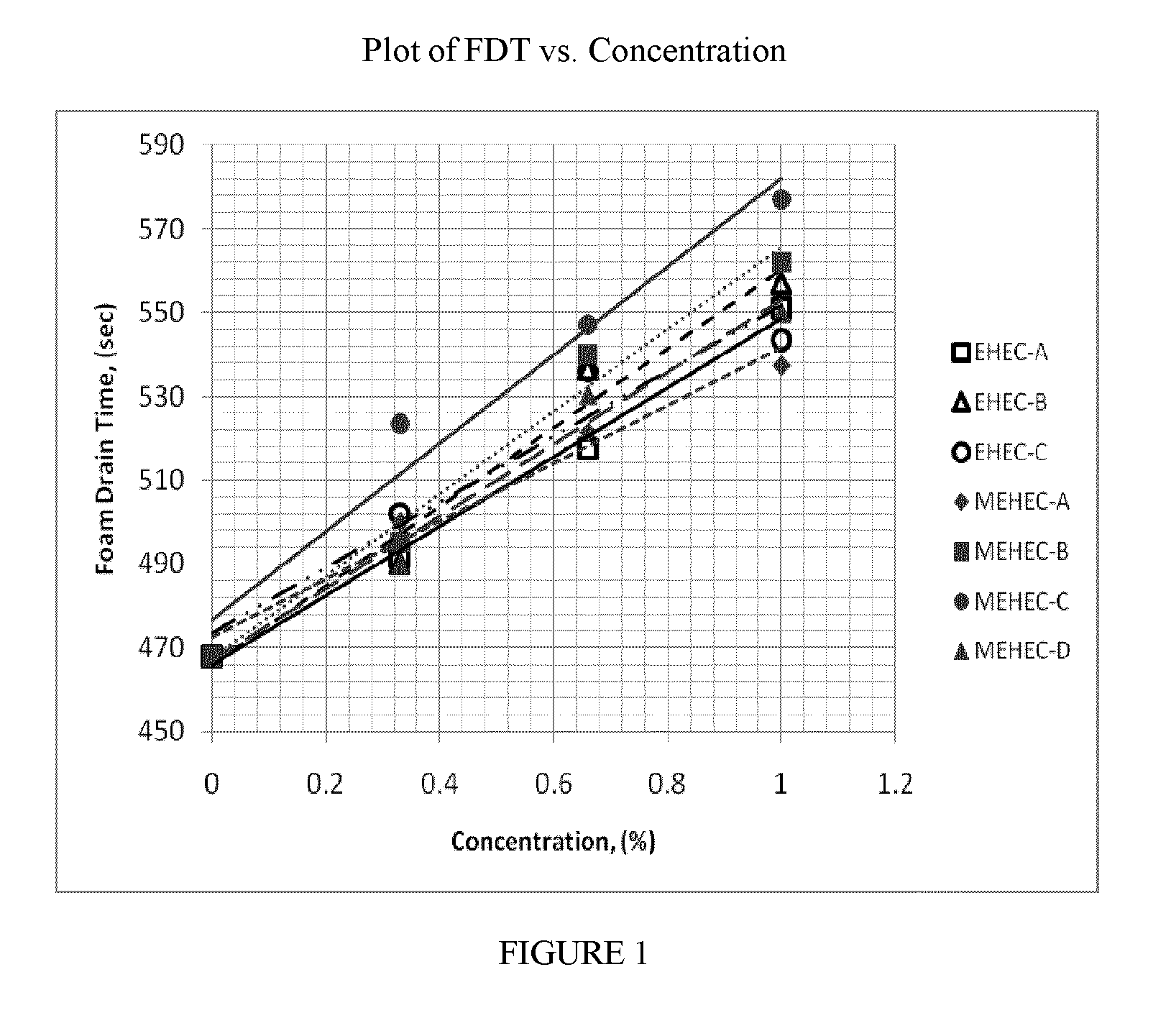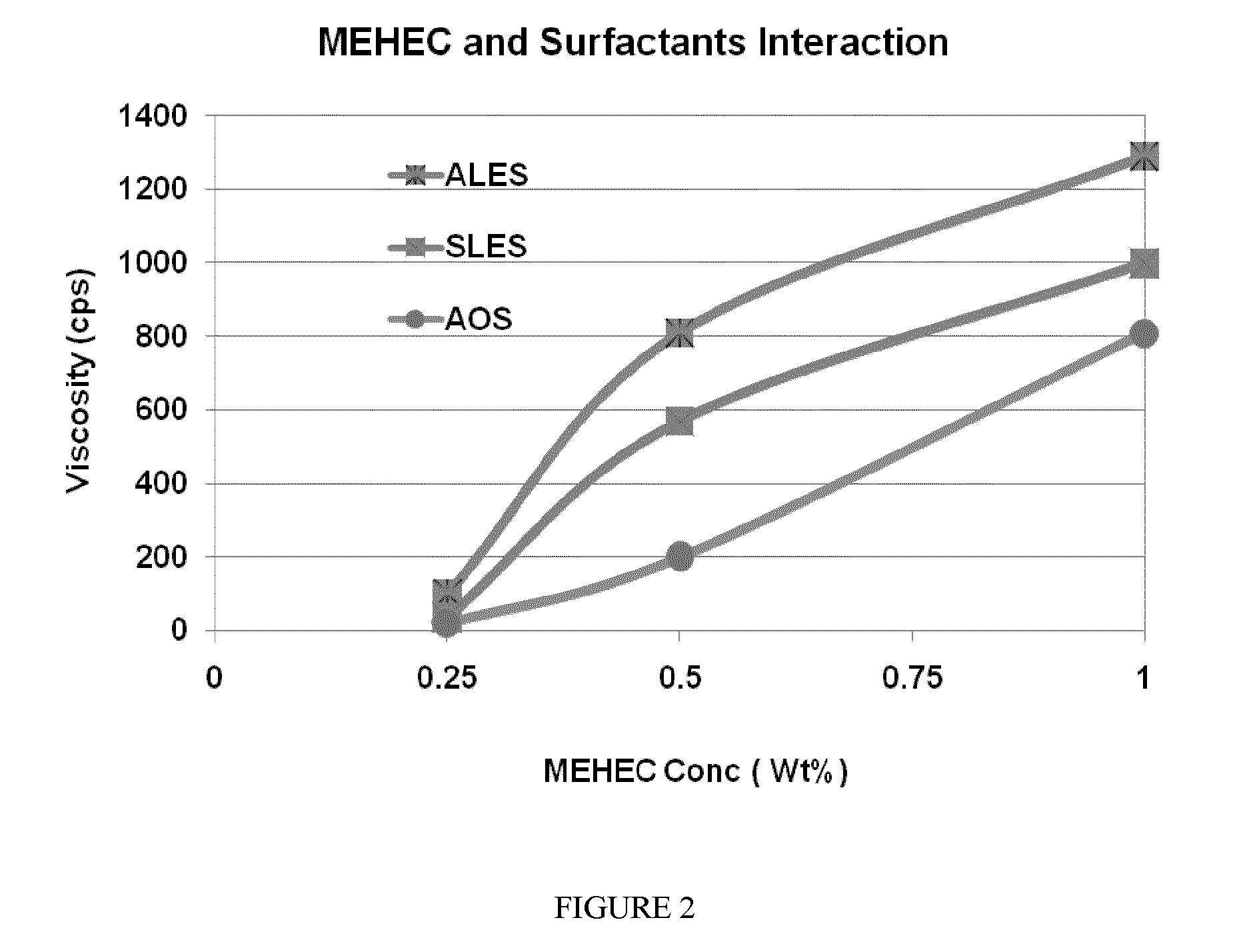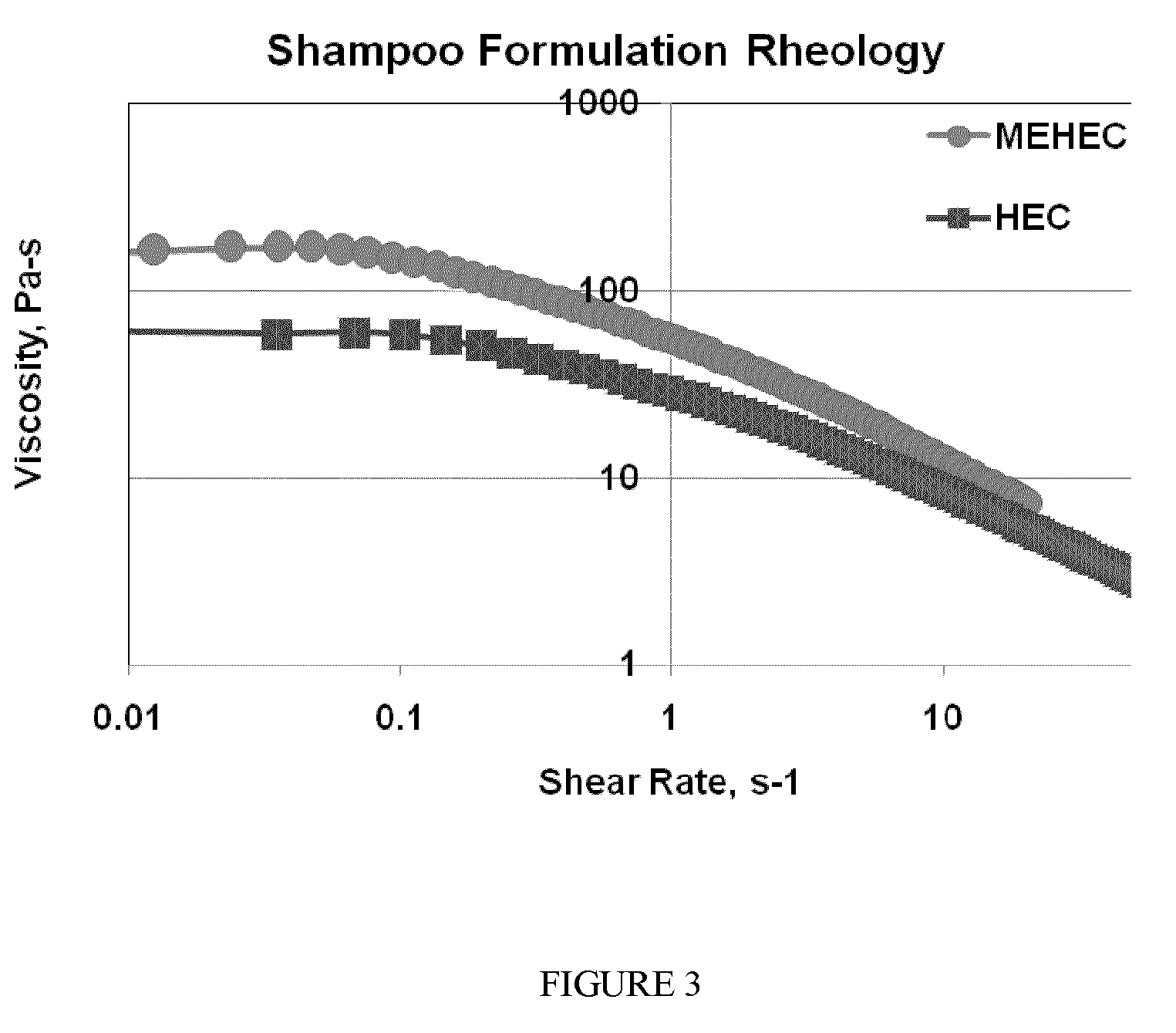Methyl ethyl hydroxyethyl cellulose for personal care applications
a technology of methyl ethyl cellulose and hydroxyethyl cellulose, which is applied in the field of thickening agents, can solve the problems of comparatively weak thickening effect of conventional hydroxyethyl cellulose ethers and little or no wetting ability
- Summary
- Abstract
- Description
- Claims
- Application Information
AI Technical Summary
Benefits of technology
Problems solved by technology
Method used
Image
Examples
example 1
Cellulosic Ether Properties
[0045]Various EHECs and MEHECs were tested in shampoo and hair styling formulations. Table 1 lists the cellulose ether samples together with their basic data. All molecular weights are expressed as weight average molecular weight (in Daltons). All viscosities reported have been measured at shear rate of 10 s−1 and 1 s−1 measured using a Rheometrics rheometer (Rheometric Scientific, Model # SR-5000) and at 25° C.
TABLE 1Degree of substitution and basic properties of Cellulose ethersCellulosic polymer Structural DataViscosityDS ratio1 s−110 s−1SampleMSEODSEthylDSMethyl(methyl / ethyl)(MW)n millionsmPa · smPa · sEHEC-A2.350.9500.001.6852832122EHEC-B1.900.9000.001.6875672754EHEC-C2.700.8500.001.7654222029MEHEC-A1.700.450.451.001.5884772925MEHEC-B2.450.450.551.221.8294823199MEHEC-C1.100.300.752.501.48104773798MEHEC-D0.300.201.256.251.2182993016
example 2
Sulfate Free Shampoo Formulations
[0046]These cellulose ethers detailed in the above Table 1 were tested in a sulfate-free shampoo formulation as shown and detailed in the table below (Table 2). The surfactant system of the samples below contained sodium cocoyl Isethionate, disodium laureth sulfosuccinate and decyl glucoside and the cellulosic material was added as a thickener and foam stabilizer.
TABLE 2Sulfate free shampoo formulations% Active (dry basis)Formulation #IngredientsABCDEFGHSodium55555555CocoylIsethionateDisodium1.671.671.671.671.671.671.671.67LaurethSulfosuccinateDecyl3.333.333.333.333.333.333.333.33GlucosideEHEC-A1EHEC-B1EHEC-C1MEHEC-A1MEHEC-B1MEHEC-C1MEHEC-D1Water9089898989898989Total100100100100100100100100
example 3
Foam Property Evaluation (Foam Drain Time, FDT)
[0047]The Foam property was evaluated by creating a foam using a blender and the measuring the time taken for half of total liquid to drain from the foam matrix, according to the procedure below.
[0048]Procedure:
[0049]Prepare a 1% solution of each of the formulations listed in table 1, above by diluting with water. A total of 200 ml of the 1% solution was transferred to a blender (Oster Fusion, 3 speed blender). Blend the solution at medium speed for 30 sec. Transfer the resulting foam quickly into a 1000 ml cylinder, ensuring that as much of foam as possible is transferred. Observe as the liquid from the foam matrix drains to the bottom of the cylinder. Note the time (t1 / 2) when the volume reaches 100 ml. The drain time is calculated by subtracting 30 sec from t112 (FDT=t1 / 2−30).
TABLE 3Foam QualityFDTFormulation #EHEC or MEHEC(sec)ANo polymer468BEHEC-A551CEHEC-B557DEHEC-C544EMEHEC-A538FMEHEC-B562GMEHEC-C577HMEHEC-D550
[0050]The results s...
PUM
| Property | Measurement | Unit |
|---|---|---|
| weight average molecular weight | aaaaa | aaaaa |
| weight average molecular weight | aaaaa | aaaaa |
| weight average molecular weight | aaaaa | aaaaa |
Abstract
Description
Claims
Application Information
 Login to View More
Login to View More - R&D
- Intellectual Property
- Life Sciences
- Materials
- Tech Scout
- Unparalleled Data Quality
- Higher Quality Content
- 60% Fewer Hallucinations
Browse by: Latest US Patents, China's latest patents, Technical Efficacy Thesaurus, Application Domain, Technology Topic, Popular Technical Reports.
© 2025 PatSnap. All rights reserved.Legal|Privacy policy|Modern Slavery Act Transparency Statement|Sitemap|About US| Contact US: help@patsnap.com



